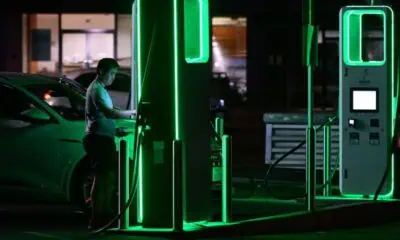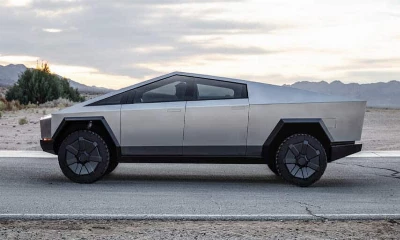Transportation
Cybertruck explosion in Las Vegas caused by fireworks, not EV fire
Not even the glass doors of the hotel lobby were broken from the impact.

Just a heads up, if you buy something through our links, we may get a small share of the sale. It’s one of the ways we keep the lights on here. Click here for more.
On January 1, 2025, around 9 AM, an explosion originated from a Tesla Cybertruck at the Trump Hotel in Las Vegas.
Video footage captured the vehicle exploding in a dramatic display of sparks before bursting into flames.
While electric vehicle (EV) fires are common, this incident quickly garnered widespread attention due to its unusual circumstances.
Initial speculation across social media suggested that the explosion resembled fireworks rather than a typical EV fire.
Tesla Cybertruck withstands a powerful explosion
Elon Musk, Tesla CEO, addressed the situation on X, stating that Tesla’s senior team was actively investigating the matter. He emphasized that such an event was unusual for the company.
Subsequent investigations revealed that the blast was caused by an improvised explosive device (IED) composed of fireworks, gas tanks, and camping fuel, all stored in the bed of the rented Cybertruck.
Tragically, the driver was killed, and seven others got minor injuries.
Musk later clarified on Twitter/X that the explosion had nothing to do with the vehicle’s design and attributed the truck’s build quality to effectively containing the blast, preventing more significant destruction.
Remarkably, even the hotel’s glass lobby doors remained intact.
Authorities are now treating the incident as a potential terrorist act and are actively investigating it.
While statistically less frequent than internal combustion engine vehicle fires, EV fires present unique challenges. These fires often result from manufacturing defects, software issues, or battery damage.
It usually happens when heat from burning battery cells ignites adjacent cells, creating an intensely difficult-to-control fire.
Moreover, lithium batteries inside the EVs act as a fuel source and react violently with water, intensifying the flames.
In such a situation, specialized extinguishing methods, such as copper powder or foam, are often required.
However, many times letting the fire burn out in a controlled environment is the safer option.
Have any thoughts on this CyberTruck blast? What are your theories on this detonation? Drop your thoughts and theories in the comments down below, or ping us via our Twitter or Facebook.
































